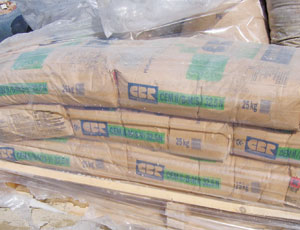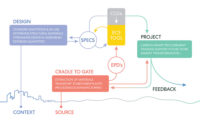While it is uncertain exactly how the U.S. will address climate change, it is clear that any regulations aimed at reducing the nation’s carbon footprint will impact construction—for better and for worse. Potential winners are those companies that build powerplants, transmission lines and install energy-efficiency measures. Firms that are leaders in sustainable building and design are also well positioned to profit from carbon regulations. Potential losers, however, will not be as clear until legislation to regulate carbon is finalized. “There are ways that it can have benefits and drawbacks,” says Calli Schmidt, spokesperson for the National Association of Home Builders. “We’re waiting to see to what actually gets passed.”

There’s still little hard information on the impact of “cap-and-trade” approaches on construction. But a draft economic impact study recently completed by EcoNorthwest, Portland, Ore., shows that caps on carbon emissions could cost industry in that state alone $400 million and more than 1,600 jobs by 2020. New rules “are going to have some negative impact,” says Max Kirk, assistant director of the School of Architecture and Construction Management at Washington State University (WSU), Pullman.
Federal legislation regulating greenhouse-gas emissions could take effect as early as 2012 under draft legislation introduced in the House of Representatives late last month by Democrats Ed Markey (Mass.) and Henry Waxman (Calif.). Waxman, chairman of the Energy and Commerce Committee, has said he intends to get some version of the bill through Congress before year’s end.
The bill would, among other things, set up a federal renewable portfolio standard, promote carbon capture and sequestration and set the framework for a federal system that would cap the amount of greenhouse-gas emissions from large industries.
New regulation of black carbon emissions could require a costly switch of construction equipment. But the Associated General Contractors is more concerned that restrictions for industries that produce construction materials, such as concrete and steel, would hike costs, ultimately tightening available funding for public works projects, says Karen Lapsevic, AGC director of tax, fiscal and infrastructure affairs.
“You’re going to see some significant changes in the price of raw materials,” says Jeff Lukowski, a consultant with FMI Corp., Raleigh, N.C. That could affect portland cement, the manufacture of which emits a large amount of carbon dioxide.
If the U.S. adopts carbon legislation, “the entire cement industry would be affected in one way or another,” says John Shaw, senior vice president of government affairs for the Skokie, Ill. -based Portland Cement Association. He says the legislation right now is very fluid, and that cement makers are working to make sure it addresses industry concerns.
But WSU’s Kirk sees much deeper and long-range implications of cap-and-trade legislation. He says caps now on carbon emissions of large industries may be a precursor to limits on carbon footprints left by construction of new roads, buildings and even homes. According to Kirk, they will require more innovation in construction sequencing, design and execution, something that could actually open new market niches for industry participants.
Bert Wellens, an engineer for Broomfield, Colo.-based MWH, says carbon emissions caps would elevate energy-efficiency improvement as client priorities and may generate new approaches in carbon credits and offsets.
Bill Kemp, vice president in the management consulting division at Black & Veatch, Overland Park, Kan., says in a carbon-constrained world, he sees no way around replacing older coal-fired electricity generating plants with wind and other renewable resources. Kemp expects renewables to be built not only on a utility-scale level, but also at building sites in an effort to reduce a project’s overall carbon footprint.


Post a comment to this article
Report Abusive Comment